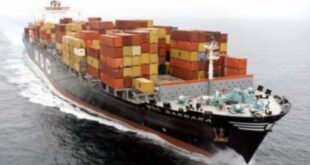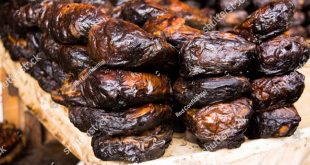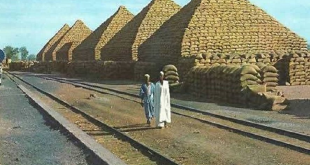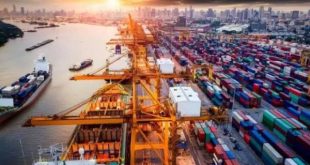Executive Summary
Background; Industrial Development in Nigeria; Mixed Economy; Cooperative Government Sector; Impact of Multinational Institutions Support; Bank Program
Background

Nigeria’s economy is touted as the largest in Sub-Sahara Africa but relies
heavily on oil and gas as its main foreign exchange earner and source of revenue.
Nigeria has been hobbled by steady decline of oil prices, inadequate power supply and general lack of infrastructure development.
Partly, because of lower prices of Oil, Nigeria entered into recession in 2016. However, GDP growth has returned positive while Oil prices are recovering and output stabilizing in 2017 as operations of militants are calming down.
The structure of the economy of Nigeria even with World Bank interventions depicts that typical of an underdeveloped country.
Infrastructure: The reliability and availability of infrastructure and provision of utility services is crucial for development.
Over half of the gross domestic product (GDP) is accounted for by the primary sector with agriculture continuing to play an important role.
The oil and gas sector contributed 14.8% & 13.8% of GDP in 2011 & 2012 respectively.
The industrial sector in Nigeria (comprising manufacturing, mining, and utilities) account for a tiny proportion of economic activity (6%)
The manufacturing sector contributed only 4% to the GDP in 2011.
2014 Nigeria Infrastructure Indices
1. Percentage of times experiencing electrical outages -77.6%
2. Number of electrical outages in a typical month-32.8%
3. Average duration of typical electrical outage hours- 11.6%
4. Average bases due to electrical outage (% of annual sales)15.6%
5. Percentage of companies owning or sharing a generators-70.7%
6. Average proportion of electricity from a generator (%)-58.8%
7. Days to obtain electrical connection (upon application)-9.4%
8. Percentage of companies identifying electricity as a major constraints- 48.4%
9. Percentage of companies experiencing water insufficiencies 16.4%
10. Number of waters insufficiencies in a typical month-2.5%
11. Proportion of products lost to breakage or spoilage during shipping to domestic markets (%) -2.8%
12. Percentage of companies identifying transportation as a major constraint – 17.1%.
Industrialization Or Industrial Development In Nigeria
The first National Development Plan (early 1960):
Import-substituting industrialization (ISI).
Establishment of Kainji Dam, Ughelli thermal power plants, an oil refinery, a development bank, and a mint and security company
The second National Development Plan (1970-1974):
Emphasis was on the upgrading of local production of intermediate and capital goods for sale to other industries
death of human capital and skills required for implementing and managing industrial projects.
The Third National Development Plan (1975-1980):
Inaugurated at the height of the oil boom.
pronounced lack of executive capacity in the country
The fourth National Development Plan (1981-1985):
Coincided with the inception of a global economic recession which sparked declining foreign earnings, balance of payment disequilibrium and unemployment in the Nigeria economy.
the Structural Adjustment Programme (SAP)
IMF/World Bank intervention as an alternative framework for addressing the weakness and ineffectiveness of previous development planning efforts.
Mixed Economy
Structure of GDP in selected economic sectors (%)
A) Agriculture
1960’s 1970’s 1980’s 1990’s 2000’s
56.96 30.01 31.17 33.67 41.14
B) Manufacturing
1960’s 1970’s 1980’s 1990’s 2000’s
6.53 6.90 6.63 5.07 3.95
C) Services
1960’s 1970’s 1980’s 1990’s 2000’s
14.97 17.06 10.32 11.31 15.86
World Bank Experiences In Nigeria
Nigeria: Selected Economic, social and infrastructure indicated 2004 or year 2017 year
|
Economic indicators |
Nigeria |
African competition |
Asian competitors |
Low countries |
|
GNI per capital, Atlas method (current) |
400 |
240 |
717 |
506 |
|
agriculture, value added per capital (inconstant 2008) |
104 |
81 |
118 |
100 |
|
manufacturing, value added per capital (constant 2005) |
-17 |
24 |
137 |
60 |
|
services, etc value added (contact 2008) |
85 |
91 |
279 |
207 |
|
Social Indicators |
||||
|
Immunization, DPT (% of children ages 12-23 months) |
-25 |
78 |
74 |
64 |
|
Mortality rate, infant (per 1,000 live birth) |
100 |
85 |
54 |
75 |
|
Mortality, rate, children 5yrs of age (per 1000) |
104 |
131 |
69 |
115 |
|
School enrolment, primary (% net) |
68 |
68 |
86 |
79 |
|
School enrollment, secondary (% net) |
27 |
14 |
41 |
40 |
WORLD BANK EXPERIENCES IN NIGERIA
Nigeria: Selected Economic, social and infrastructure indicated 2004 to 2017
|
Infrastructure Indicators |
Nigeria |
African competition |
Asian competitors |
Low countries |
|
Road density (km or road per 1,000km2of land) |
221 |
6 |
79 |
– |
|
Telephone mainlines (per 1,000 people) |
7 |
5 |
27 |
30 |
|
Electric power consumption (kwh per capital) |
97 |
151 |
348 |
374 |
|
Improved sanitation facilities, urban population access |
53 |
50 |
72 |
61 |
|
Improved water source, urban (% of urban population with access) |
67 |
79 |
88 |
88 |
Source: World Bank internal database. Note: DPTs diptithering tetanus, GNI=gross invited income km=kilometer; kw = kilowatt hour.THE BANK PROGRAM
Lending: Lending has been broadly consistent with Nigeria’s poverty reduction strategy.
Institutional development: supported an ambitious agenda of institutional development in Nigeria increased progress in human resource management and skills development is needed to ensure the implementation and sustainability of institutional and structure reforms
 MMS PLUS NG – Maritime, Aviation, Business, Oil and Gas News Online Newspaper with coverage in Maritime, Oil and Gas, Aviation, Power and Energy as well as Financial News
MMS PLUS NG – Maritime, Aviation, Business, Oil and Gas News Online Newspaper with coverage in Maritime, Oil and Gas, Aviation, Power and Energy as well as Financial News










